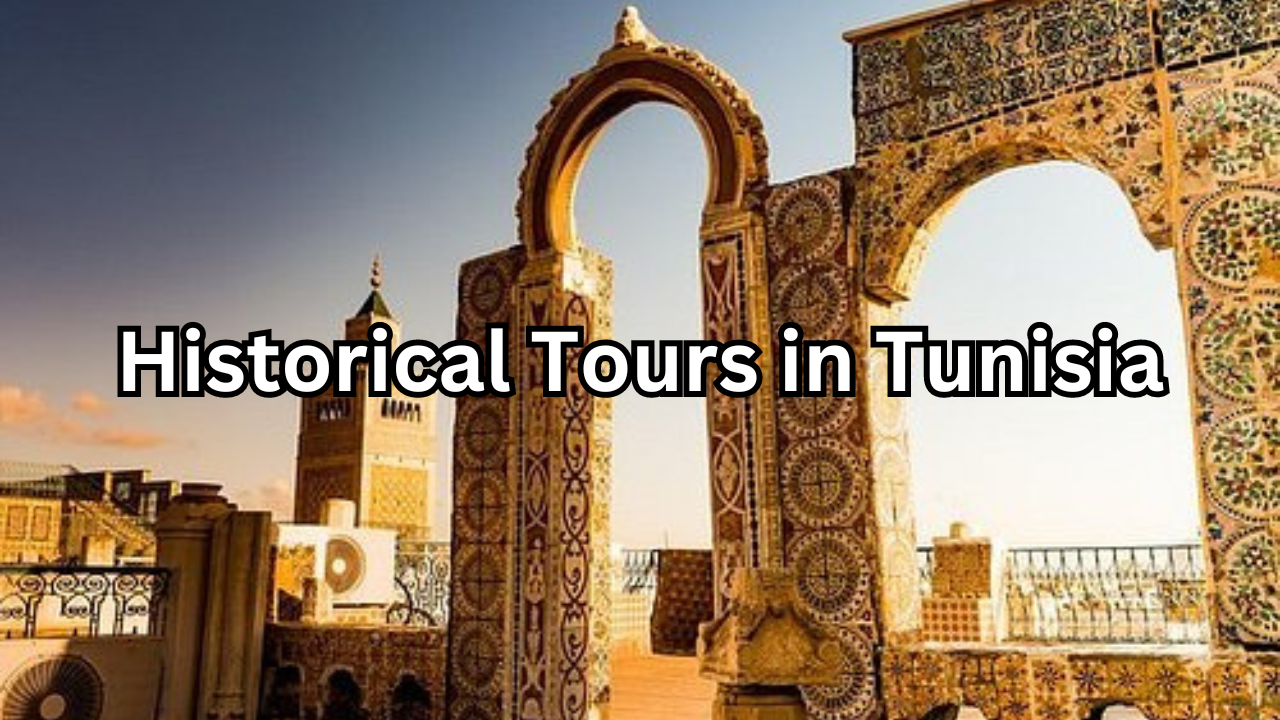
Table of Contents
Introduction
Overview of Tunisia’s Historical Significance
Historical Tours in Tunisia, a small North African country nestled between the Mediterranean Sea and the Sahara Desert, boasts a rich and diverse history that spans millennia. This region has been a crossroads of civilizations, playing a pivotal role in the development of the ancient world. From the legendary city of Carthage, which was a major power in the Mediterranean before its fall to Rome, to the remnants of the Roman, Byzantine, and Islamic empires, Tunisia is a treasure trove of historical and archaeological wonders. The layers of history found here provide an unparalleled insight into the confluence of cultures and empires that have shaped not only Tunisia but also the broader Mediterranean region.
Importance of Historical Tours in Tunisia
Historical tourism in Tunisia Asia is not just about exploring ancient ruins; it’s about immersing oneself in the living history that continues to influence the country’s culture, architecture, and way of life. This type of tourism is vital for several reasons. Economically, it brings significant revenue, supporting local businesses and communities. Culturally, it fosters a sense of pride and preservation among Tunisians, ensuring that their rich heritage is maintained for future generations. Moreover, historical tourism offers visitors a deeper understanding of global history and the interconnectedness of different cultures. By walking through ancient cities, visiting museums, and participating in local traditions, tourists gain a profound appreciation for Tunisia’s past and its contributions to world history.
Purpose and Structure of This Guide
This guide aims to provide a comprehensive roadmap for anyone interested in exploring Tunisia’s historical sites. It is structured to cover a wide range of topics, ensuring that readers get a full picture of what Tunisia has to offer. We will start by delving into the ancient civilizations that once thrived here, including the Carthaginians, Romans, and Byzantines. Following this, we will explore the Islamic heritage and its lasting impact on Tunisian architecture and culture. The guide will also cover the colonial and modern history of Tunisia, highlighting significant sites from the Ottoman and French periods.
Ancient Civilizations and Archaeological Sites
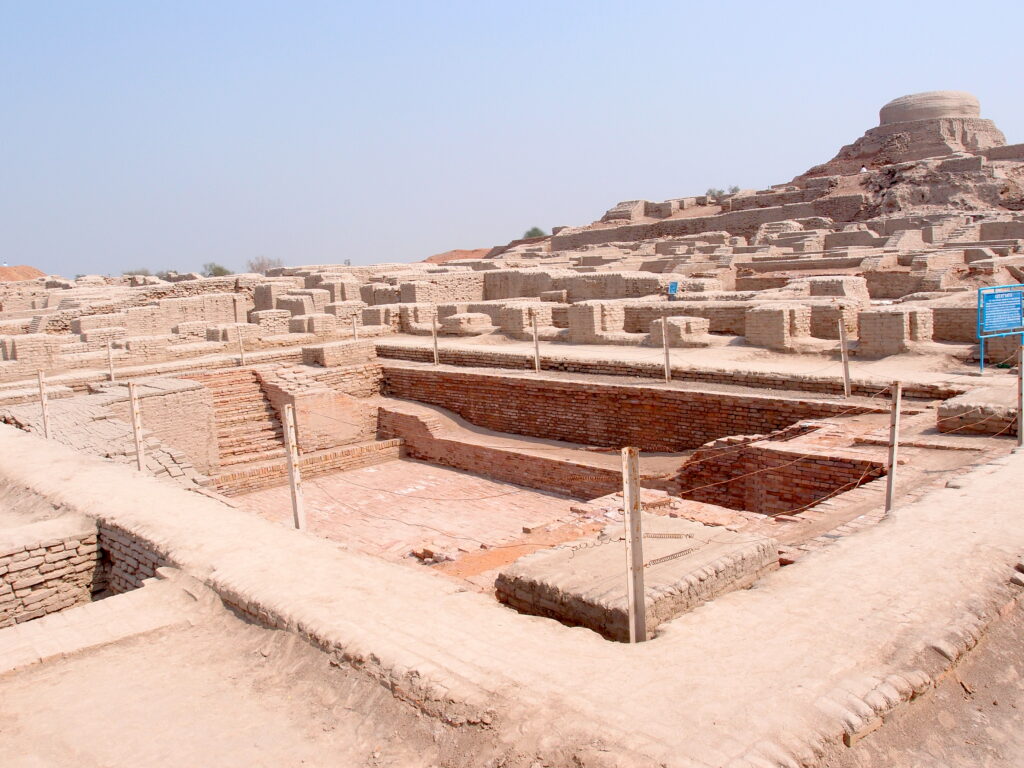
Carthaginian Empire
Origins and Historical Context
The Carthaginian Empire, founded in the 9th century BCE by Phoenician settlers from Tyre (modern-day Lebanon), emerged as a powerful and influential civilization in the Mediterranean. Carthage, the capital city, was strategically located on the coast of present-day Tunisia, enabling it to become a dominant maritime and commercial power. The Carthaginians, known for their seafaring prowess and extensive trade networks, established colonies and trading posts across the Mediterranean and North Africa.
Throughout its history, Carthage was a center of wealth, culture, and innovation. It developed a unique culture influenced by both its Phoenician roots and the diverse peoples it interacted with. The Carthaginian Empire reached its zenith in the 3rd century BCE under the leadership of generals like Hamilcar Barca and his son Hannibal, who famously challenged the Roman Republic during the Punic Wars. Despite their military prowess, the Carthaginians ultimately succumbed to Roman forces in 146 BCE, marking the end of the Carthaginian Empire but leaving a lasting legacy in the annals of history.
Key Sites: Carthage Ruins
The ruins of Carthage, a UNESCO World Heritage Site, are among the most significant archaeological treasures in Tunisia. Located just outside the modern capital city of Tunis, these ruins provide a fascinating glimpse into the grandeur and complexity of ancient Carthage.
- Tophet of Carthage: An ancient sanctuary and burial ground, the Tophet offers insights into Carthaginian religious practices and rituals. It is believed to have been a site where offerings, including child sacrifices, were made to deities such as Baal Hammon and Tanit.
- Byrsa Hill: The heart of ancient Carthage, Byrsa Hill was the city’s acropolis and administrative center. Here, visitors can explore the remains of Punic and Roman buildings, including houses, streets, and the ancient forum.
- Antonine Baths: Among the largest Roman bath complexes in North Africa, the Antonine Baths showcase the luxurious lifestyle of Roman Carthage. These well-preserved ruins highlight the architectural and engineering prowess of the time.
- Punic Ports: The remains of the Carthaginian naval and commercial harbors reflect Carthage’s importance as a maritime power. The circular military harbor and the rectangular commercial port demonstrate advanced planning and construction techniques.
Must-See Artifacts
The Carthage Museum, located on Byrsa Hill, houses a remarkable collection of artifacts that bring the history of Carthage to life. Some must-see items include:
- Punic Masks and Stelae: These artifacts, often depicting deities and mythological scenes, provide insight into Carthaginian religious and artistic traditions.
- Hannibal’s Coins: Coins minted during the time of Hannibal, featuring his image and symbols of Carthaginian power, offer a tangible connection to this legendary military leader.
- Carthaginian Ceramics: The museum’s extensive collection of pottery and ceramics illustrates the daily life, trade, and cultural influences of Carthage. Items range from simple household wares to intricately decorated pieces used in religious ceremonies.
- Punic Inscriptions: Various inscriptions, both on stone and metal, shed light on the language, administration, and historical events of Carthage.
Roman Legacy
Influence of Roman Empire in Tunisia
The Roman Empire’s influence in Tunisia is profound and far-reaching, having left an indelible mark on the region’s architecture, culture, and society. After the fall of Carthage in 146 BCE, Tunisia became part of the Roman province of Africa Proconsularis. This period ushered in an era of significant development and prosperity, as the Romans invested heavily in the infrastructure and urbanization of their new territory. They built roads, aqueducts, theaters, and public baths, integrating the region into the broader Roman world. The introduction of Roman law, customs, and language also facilitated a cultural fusion that enriched the local traditions. Tunisia’s fertile lands became a vital part of the Roman economy, producing grain, olive oil, and other goods that were exported throughout the empire. The Roman legacy in Tunisia is a testament to the transformative power of Roman colonization, which laid the foundations for many aspects of modern Tunisian life.
Key Sites: Dougga, El Djem Amphitheatre
Two of the most remarkable Roman sites in Tunisia are Dougga and the El Djem Amphitheatre, both of which showcase the grandeur and sophistication of Roman architecture and urban planning.
- Dougga: Often referred to as the best-preserved Roman small town in North Africa, Dougga is a UNESCO World Heritage Site that offers an exceptional glimpse into Roman provincial life. Nestled in the hills of northern Tunisia, Dougga features a range of well-preserved structures, including the Capitol, a majestic temple dedicated to Jupiter, Juno, and Minerva; the Theater, which could seat 3,500 spectators; and numerous other temples, baths, and residential buildings. The site is a testament to the Romans’ ability to adapt their architectural styles to different environments while maintaining their distinct cultural identity.
- El Djem Amphitheatre: One of the largest and most impressive Roman amphitheaters in the world, the El Djem Amphitheatre rivals even the Colosseum in Rome. Constructed in the 3rd century CE, this monumental structure could hold up to 35,000 spectators, making it a central hub for entertainment and social gatherings. The amphitheater’s well-preserved state allows visitors to explore its vast seating areas, subterranean passages, and the arena floor, where gladiatorial combats and other spectacles once took place. El Djem stands as a powerful symbol of Roman engineering prowess and the cultural importance of public entertainment in the Roman Empire.
Highlights of Roman Architecture
Roman architecture in Tunisia is characterized by its grandeur, functionality, and adaptability, reflecting the Romans’ ability to blend their architectural heritage with local influences. Key highlights of Roman architecture in Tunisia include:
- Triumphal Arches: These monumental structures were erected to commemorate significant military victories and honor emperors. Examples include the Arch of Trajan in Timgad and the Arch of Septimius Severus in Leptis Magna, which showcase intricate reliefs and inscriptions celebrating Roman achievements.
- Aqueducts and Water Systems: The Romans were masters of hydraulic engineering, as evidenced by the extensive network of aqueducts and cisterns in Tunisia. The Zaghouan Aqueduct, which supplied water to Carthage, and the impressive cisterns at Dougga highlight the Romans’ ability to manage and distribute water resources efficiently.
- Public Baths: Roman baths, such as the Antonine Baths in Carthage, were not only centers of hygiene but also social and cultural hubs. These baths featured advanced heating systems, elaborate mosaics, and various facilities like hot and cold rooms, swimming pools, and exercise areas, reflecting the Romans’ emphasis on public health and leisure.
- Temples and Theaters: The temples and theaters of Roman Tunisia, such as the Capitol in Dougga and the Theater of Carthage, exemplify the architectural grandeur and cultural importance of these structures. They were designed not only as places of worship and entertainment but also as symbols of Roman authority and civic pride.
Byzantine Influence
Byzantine Period Overview
The Byzantine period in Tunisia began in the 6th century CE, following the decline of the Western Roman Empire. The Byzantine Empire, also known as the Eastern Roman Empire, sought to reclaim former Roman territories in North Africa, and their reconquest of Tunisia was part of Emperor Justinian’s ambitious campaign to restore Roman glory. This period brought significant changes to the region, with the Byzantines fortifying cities and establishing military outposts to secure their control. Despite facing continuous threats from local Berber tribes and later the expanding Arab Caliphates, the Byzantine presence in Tunisia left a lasting impact. They contributed to the region’s architectural and cultural landscape, blending Roman traditions with their distinct Byzantine style, characterized by religious iconography and intricate mosaics.
Key Sites: Sbeitla Ruins
One of the most significant Byzantine sites in Tunisia is the ancient city of Sbeitla, also known as Sufetula. Located in central Tunisia, Sbeitla is renowned for its remarkably well-preserved ruins that reflect its historical importance as a Roman and later Byzantine settlement. The city flourished under Byzantine rule, becoming a key administrative and military center. Visitors to Sbeitla can explore a wealth of structures that date back to this period, including churches, basilicas, and fortifications. Notable highlights include the Byzantine Basilica of St. Vitalis, known for its beautiful mosaics and the intricate design of its baptistery, and the nearby Byzantine fortifications that offer insights into the military strategies employed to defend the city against invaders. Sbeitla’s ruins provide a tangible connection to the Byzantine era, showcasing the architectural and cultural influences that shaped the region during this time.
Byzantine Art and Architecture
Byzantine art and architecture in Tunisia are characterized by their distinctive aesthetic and functional elements, reflecting the empire’s religious and cultural priorities. Byzantine architects and artisans were adept at incorporating existing Roman structures into their designs, creating a unique fusion of styles. Key features of Byzantine architecture in Tunisia include the use of domes, elaborate mosaics, and intricate stonework.
- Domed Structures: One of the hallmark features of Byzantine architecture is the use of domes, often constructed over square bases using pendentives. This can be seen in the churches and basilicas built during this period, where domes added a sense of grandeur and spiritual elevation to the buildings.
- Mosaics: Byzantine mosaics are renowned for their detailed and vibrant depictions of religious scenes, saints, and emperors. The use of colorful glass, stone, and gold tesserae to create intricate images and patterns is a prominent feature in Byzantine churches and public buildings. The mosaics at Sbeitla’s Basilica of St. Vitalis, for example, exhibit the artistic sophistication and theological symbolism characteristic of Byzantine art.
- Intricate Stonework and Carvings: Byzantine structures in Tunisia often feature elaborate stone carvings and decorative elements, such as capitals, friezes, and reliefs. These designs typically incorporate Christian iconography, floral motifs, and geometric patterns, reflecting the Byzantine emphasis on both spiritual and aesthetic expression.
Islamic Heritage
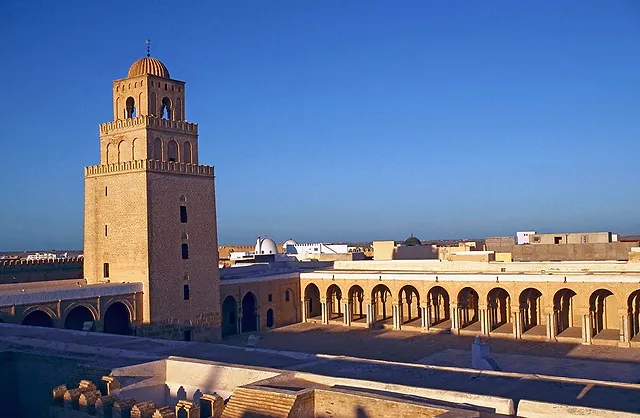
Arrival of Islam
Historical Context of Islamic Influence
The arrival of Islam in Tunisia marked a profound transformation in the region’s cultural, social, and political landscape. The Islamic conquest of North Africa began in the 7th century CE, during the Rashidun Caliphate’s expansion under the leadership of Caliph Uthman ibn Affan. By 670 CE, Arab Muslim armies had established their presence in Tunisia, founding the city of Kairouan, which became a significant center for Islamic learning and governance. This conquest was part of a broader movement that saw the rapid spread of Islam across the Middle East, North Africa, and beyond.
Early Islamic Architecture in Tunisia
The advent of Islam in Tunisia gave rise to a distinctive architectural style that blended pre-Islamic traditions with new Islamic aesthetics and functional requirements. Early Islamic architecture in Tunisia is characterized by its simplicity, geometric designs, and the use of locally available materials. One of the most significant contributions of early Islamic architecture in Tunisia is the introduction of the mosque as a central communal space for worship, education, and social activities.
- Great Mosque of Kairouan: Also known as the Mosque of Uqba, the Great Mosque of Kairouan is one of the oldest and most important mosques in the Islamic world. Founded in 670 CE by Uqba ibn Nafi, a companion of the Prophet Muhammad, the mosque exemplifies early Islamic architectural principles. Its large rectangular courtyard, hypostyle prayer hall with numerous columns, and imposing minaret are defining features. The mosque’s design reflects both functional needs and symbolic elements, incorporating elements from Roman and Byzantine architecture while introducing new Islamic motifs.
- Zaytuna Mosque: Located in the heart of Tunis, the Zaytuna Mosque is another prominent example of early Islamic architecture in Tunisia. Established in the 8th century, it became a major center for Islamic scholarship and learning. The mosque features a large central courtyard, surrounded by arcades and a prayer hall with intricately carved wooden doors and stucco decorations. The Zaytuna Mosque’s design emphasizes both aesthetic beauty and the practical aspects of Islamic worship.
- Sidi Oqba Mosque: Another significant early Islamic structure is the Sidi Oqba Mosque in Kairouan. Like the Great Mosque, it showcases the adaptation of existing architectural elements with new Islamic features. The mosque’s use of horseshoe arches, geometric patterns, and intricate calligraphy set a precedent for Islamic art and architecture in the region.
Key Islamic Sites
Great Mosque of Kairouan
The Great Mosque of Kairouan, also known as the Mosque of Uqba, stands as one of the most significant and impressive examples of Islamic architecture in North Africa. Founded in 670 CE by the Arab general Uqba ibn Nafi, the mosque is located in Kairouan, Tunisia’s spiritual capital. It is considered one of the oldest and most important mosques in the Islamic world, often referred to as the “fourth holiest site in Islam” after Mecca, Medina, and Jerusalem.
The mosque’s architectural design combines simplicity with grandeur. Its vast rectangular courtyard, surrounded by porticoes, serves as a tranquil space for reflection and community gatherings. The hypostyle prayer hall, with its rows of arches supported by marble and porphyry columns, exemplifies the adaptability of pre-Islamic Roman and Byzantine materials into Islamic religious structures. The mosque’s imposing minaret, a square tower standing at over 30 meters high, is one of the oldest surviving minarets and serves as a model for subsequent Islamic architecture. The Great Mosque of Kairouan is not only a place of worship but also a symbol of the enduring legacy of Islamic culture and scholarship in Tunisia.
Medina of Tunis
The Medina of Tunis is a vibrant and historically rich area that serves as the heart of the capital city, Tunis. Founded in the 7th century, the medina is a UNESCO World Heritage Site, recognized for its well-preserved urban fabric and architectural heritage that spans several centuries. The medina is a labyrinth of narrow streets, bustling souks, and historic buildings, reflecting a blend of Islamic, Andalusian, Ottoman, and European influences.
At the center of the medina lies the Zaytuna Mosque, which has been a focal point of religious and cultural life in Tunis since its establishment in the 8th century. The medina is also home to numerous other historic mosques, madrasas (Islamic schools), palaces, and residences, each with unique architectural features and historical significance. The intricate wooden doors, stucco decorations, and colorful tilework found throughout the medina showcase the artistic and architectural achievements of various periods. The Medina of Tunis offers a captivating journey through Tunisia’s Islamic history and provides a vibrant snapshot of its living cultural heritage.
Zaytuna Mosque
The Zaytuna Mosque, or Ez-Zitouna Mosque, is one of the oldest and most influential mosques in Tunisia. Located in the heart of the Medina of Tunis, it was established in 732 CE, making it a central institution for religious, cultural, and educational life in the city. The mosque has played a pivotal role in the spread of Islamic knowledge and has been a renowned center of learning for centuries, producing many notable scholars and jurists.
Architecturally, the Zaytuna Mosque is a masterpiece of Islamic art and design. Its large central courtyard, surrounded by porticoes, provides a serene space for prayer and contemplation. The prayer hall, supported by rows of columns, features intricate wooden carvings, stucco work, and calligraphy that highlight the mosque’s historical and artistic significance. The mosque’s minaret, rising above the medina, is a prominent landmark in Tunis.
Colonial and Modern History
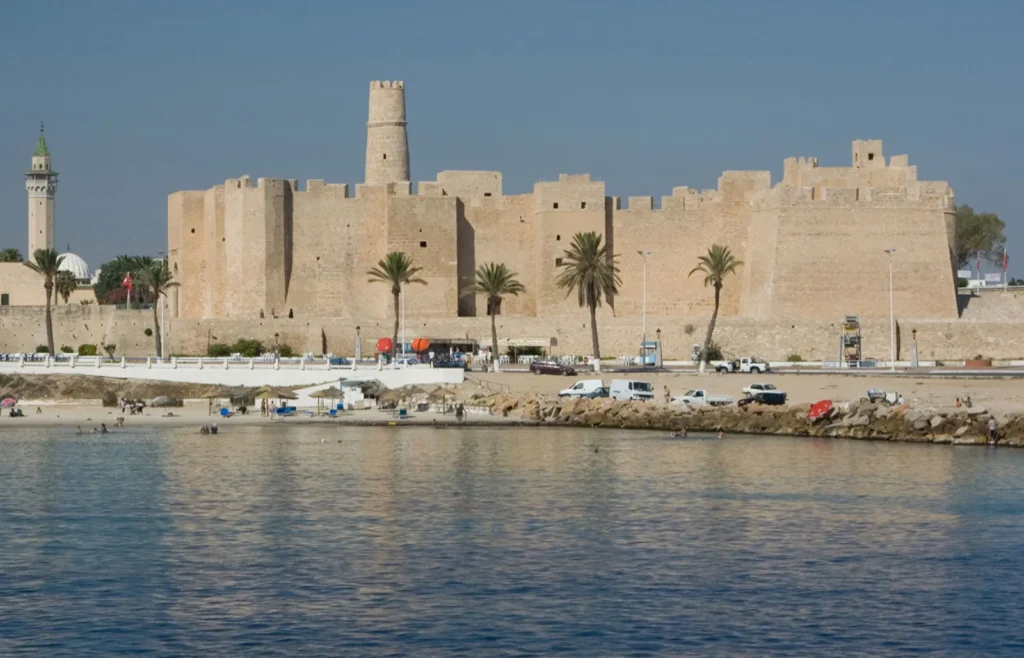
Ottoman Era
Ottoman Influence and Architecture
The Ottoman era in Tunisia, spanning from the late 16th century to the late 19th century, brought about significant changes and lasting influences on the region’s culture, society, and architecture. The Ottomans established their rule in Tunisia after the defeat of the Spanish-backed Hafsid dynasty. Under Ottoman rule, Tunisia became a semi-autonomous province of the empire, governed by local rulers known as beys, who were loyal to the Ottoman Sultan.
Ottoman influence in Tunisia is evident in various aspects of life, particularly in architecture, urban planning, and administrative structures. Ottoman architecture introduced new elements and styles that were integrated with the existing Andalusian and local traditions. Notable features include the use of domes, courtyards, and intricate tilework, which are seen in the mosques, palaces, and public buildings constructed during this period.
Ottoman-era buildings in Tunisia often exhibit a blend of functionality and aesthetic appeal, characterized by their elaborate decorative elements such as stucco work, painted wood ceilings, and colorful ceramic tiles. These structures also incorporate elements of Islamic art and architecture, creating a unique fusion that reflects the diverse cultural influences present in Tunisia during the Ottoman period.
Key Sites: Medina of Sousse
The Medina of Sousse, a UNESCO World Heritage Site, is one of the most remarkable examples of Ottoman influence and architecture in Tunisia. Located on the eastern coast of the country, Sousse has a rich history that dates back to antiquity. The medina, with its winding streets, traditional houses, and historic monuments, offers a glimpse into the city’s past under Ottoman rule.
One of the most prominent Ottoman-era structures in the Medina of Sousse is the Ribat, a fortified monastery that served as both a religious and military outpost. The Ribat, originally built during the early Islamic period, was later expanded and modified by the Ottomans. It features a distinctive architectural style with its massive walls, watchtowers, and a central courtyard surrounded by arched galleries. The Ribat’s tower offers panoramic views of the medina and the surrounding area, highlighting its strategic importance.
Another significant Ottoman site in Sousse is the Great Mosque, which was constructed in the 9th century and later enhanced during the Ottoman period. The mosque’s architecture reflects a blend of early Islamic and Ottoman influences, with its large prayer hall, courtyard, and distinctive minaret. The use of horseshoe arches, geometric patterns, and decorative tilework in the mosque’s design showcases the artistic and architectural contributions of the Ottomans to the region.
The Medina of Sousse also features traditional houses and public buildings that exhibit Ottoman architectural elements, such as carved wooden doors, wrought iron balconies, and decorative tile facades. These structures provide a vivid portrayal of life during the Ottoman era and the lasting impact of Ottoman culture on Tunisia’s architectural heritage.
Exploring the Medina of Sousse offers a captivating journey through Tunisia’s Ottoman past, revealing the architectural and cultural legacy of this influential period. The blend of Ottoman, Islamic, and local elements in the medina’s buildings reflects the rich and diverse history that has shaped Tunisia into the unique and vibrant country it is today.
French Colonial Period
French Colonial Impact
The French colonial period in Tunisia, spanning from 1881 to 1956, had a profound and lasting impact on the country’s political, social, and cultural landscape. Tunisia became a French protectorate under the Treaty of Bardo, which placed it under French control while maintaining the appearance of Tunisian sovereignty. This period saw significant changes in infrastructure, education, economy, and administration.
French colonial rule introduced modern infrastructure, including railways, roads, and ports, which facilitated economic development and integration into the global economy. However, these developments primarily benefited the colonial administration and French settlers, often at the expense of the local population. The French also restructured the agricultural sector, promoting the cultivation of cash crops such as olives and grapes, which disrupted traditional farming practices and led to socioeconomic changes.
In the realm of education and culture, the French established a system that promoted the French language and culture, often at the expense of local traditions and Arabic education. French architecture and urban planning also left a significant mark on Tunisian cities, with the construction of modern European-style buildings, broad boulevards, and public squares that contrasted sharply with the traditional medinas.
Key Sites: Cathedral of St. Vincent de Paul, Bardo National Museum
The French colonial period is reflected in several key sites in Tunisia, notably the Cathedral of St. Vincent de Paul and the Bardo National Museum.
- Cathedral of St. Vincent de Paul: Located in the heart of Tunis, the Cathedral of St. Vincent de Paul is a striking example of French colonial architecture. Built in 1897, the cathedral is named after the patron saint of charity and serves as the main church of the Roman Catholic Archdiocese of Tunis. The building’s design combines elements of Gothic, Moorish, and Neo-Byzantine styles, reflecting the eclectic architectural trends of the period. The cathedral stands as a symbol of the French colonial presence and the influence of European culture in Tunisia. Its prominent location on Avenue Habib Bourguiba, one of the main thoroughfares of Tunis, underscores its importance during the colonial era.
- Bardo National Museum: The Bardo National Museum, housed in a former Ottoman palace, is one of the most important cultural institutions in Tunisia. While the palace itself predates the French colonial period, the museum was extensively developed and expanded during French rule, beginning in 1888. The French administration played a crucial role in transforming the palace into a museum, showcasing Tunisia’s rich archaeological and historical heritage. The Bardo Museum is renowned for its extensive collection of Roman mosaics, as well as artifacts from various periods of Tunisian history, including the Punic, Roman, Byzantine, and Islamic eras. The museum’s organization and display methods reflect the influence of French museology and academic scholarship, contributing to the preservation and appreciation of Tunisia’s cultural heritage.
UNESCO World Heritage Sites
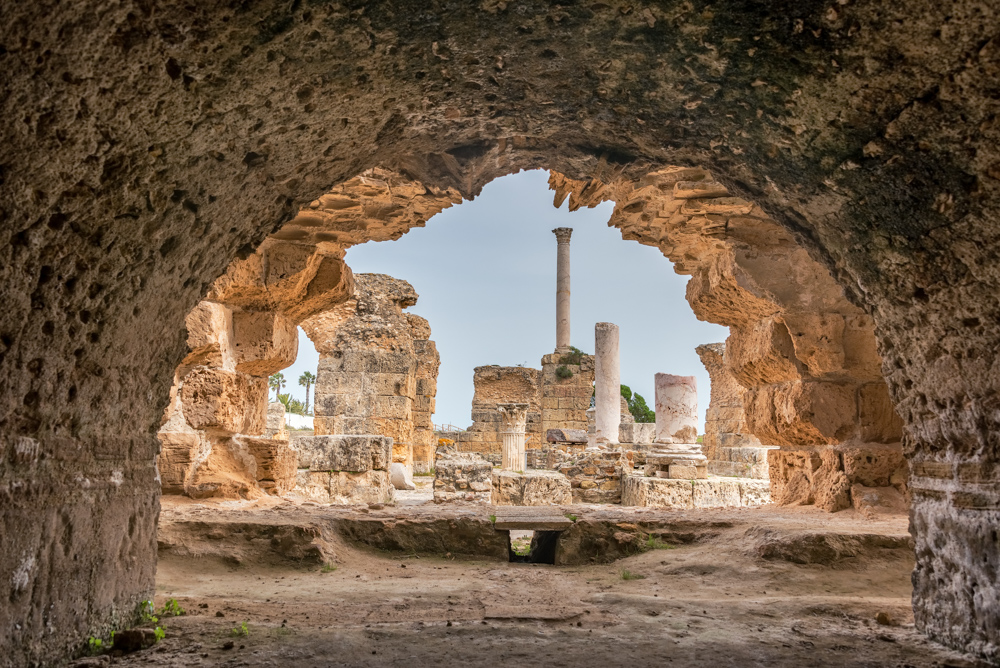
Overview of Tunisia’s UNESCO Sites
Tunisia boasts a diverse array of UNESCO World Heritage Sites that highlight its rich cultural and historical significance. These sites represent millennia of human history and architectural achievements, offering insights into various civilizations that have shaped the region. From ancient Roman ruins to Islamic cities and Ottoman fortifications, Tunisia’s UNESCO sites attract visitors from around the world seeking to explore its unique heritage.
One of the most renowned UNESCO sites in Tunisia is the Medina of Tunis, a labyrinthine old town that dates back to the 8th century. This bustling urban area is a treasure trove of historic mosques, palaces, and souks, showcasing a blend of Islamic, Andalusian, and Ottoman architecture. Another iconic site is Carthage, once the capital of the powerful Carthaginian Empire and later a Roman city. Its ruins, including the Baths of Antoninus and the Punic ports, provide a glimpse into ancient Mediterranean civilization.
The Archaeological Site of Dougga stands as a testament to Roman urban planning, featuring well-preserved temples, theaters, and public baths amid a picturesque landscape. In contrast, the Medina of Sousse reflects the architectural and cultural legacy of the medieval Islamic period, with its ribat (fortified monastery) and traditional houses.
Tunisia’s UNESCO sites not only preserve architectural marvels but also serve as living cultural landscapes that continue to influence contemporary Tunisian life. These sites underscore Tunisia’s pivotal role in Mediterranean history and its commitment to safeguarding its cultural heritage for future generations.
Criteria for UNESCO Designation
UNESCO World Heritage Sites are selected based on strict criteria that emphasize their outstanding universal value and the need for their protection and preservation. There are ten criteria in total, and a site must meet at least one to be considered for UNESCO designation:
- Cultural Criteria:
- Criterion (i): Represents a masterpiece of human creative genius.
- Criterion (ii): Exhibits an important interchange of human values, over a span of time or within a cultural area of the world, on developments in architecture or technology, monumental arts, town-planning, or landscape design.
- Criterion (iii): Bears a unique or at least exceptional testimony to a cultural tradition or to a civilization which is living or which has disappeared.
- Criterion (iv): Is an outstanding example of a type of building, architectural or technological ensemble or landscape which illustrates a significant stage in human history.
- Natural Criteria:
- Criterion (vii): Contains superlative natural phenomena or areas of exceptional natural beauty and aesthetic importance.
- Criterion (viii): Is an outstanding example representing major stages of Earth’s history, including the record of life, significant on-going geological processes in the development of landforms, or significant geomorphic or physiographic features.
- Criterion (ix): Is an outstanding example representing significant on-going ecological and biological processes in the evolution and development of terrestrial, freshwater, coastal and marine ecosystems and communities of plants and animals.
- Mixed Criteria (both cultural and natural significance):
- Criterion (x): Contains the most important and significant natural habitats for in-situ conservation of biological diversity, including those containing threatened species of outstanding universal value from the point of view of science or conservation.
Detailed Exploration
Medina of Tunis
The Medina of Tunis, a UNESCO World Heritage Site since 1979, stands as a testament to over a millennium of cultural and architectural evolution. Founded in the 8th century AD, this historic quarter served as the heart of the city throughout its various incarnations under Islamic, Andalusian, and Ottoman rule. Enclosed within ancient walls, the medina is a labyrinth of narrow alleys, bustling souks, and intricately designed mosques and palaces.
Key highlights include the Zaytuna Mosque, founded in the 8th century and renowned for its expansive courtyard and beautiful calligraphy. The medina’s architecture features elements such as decorative wooden doors, ornate stucco work, and colorful ceramic tiles, reflecting the diverse influences that have shaped Tunisia’s cultural landscape. The medina also houses the Bab el Bahr (Sea Gate), which served as the main entrance to the city during medieval times, and the Dar Hussein, a 17th-century palace showcasing traditional Tunisian architecture and lifestyle.
Exploring the Medina of Tunis offers a captivating journey through centuries of history and cultural exchange, providing visitors with a glimpse into the daily life and architectural splendor of Tunisia’s capital city.
Archaeological Site of Carthage
The Archaeological Site of Carthage, designated as a UNESCO World Heritage Site in 1979, preserves the remnants of one of the ancient world’s most influential civilizations. Founded by the Phoenicians in the 9th century BC, Carthage became a dominant maritime power in the Mediterranean, challenging the might of Rome during the Punic Wars. The site includes numerous ruins and archaeological remains that span different periods of its history.
Key attractions at Carthage include the Baths of Antoninus, one of the largest Roman bath complexes outside of Rome, showcasing advanced hydraulic systems and mosaic decorations. The Tophet, an ancient cemetery where urns containing the ashes of sacrificial victims were found, offers insights into Carthaginian religious practices. The Carthage National Museum, located nearby, houses a vast collection of artifacts excavated from the site, including sculptures, ceramics, and jewelry that illuminate the daily life and artistic achievements of the Carthaginian civilization.
Visiting the Archaeological Site of Carthage allows travelers to immerse themselves in the ancient history and architectural grandeur of a civilization that shaped the course of Mediterranean history for centuries.
Amphitheatre of El Jem
The Amphitheatre of El Jem, often referred to as the Roman Colosseum of North Africa, is a marvel of ancient Roman engineering and architecture. Built in the 3rd century AD, this UNESCO World Heritage Site showcases the grandeur and scale of Roman entertainment and civic life in North Africa. With a capacity of up to 35,000 spectators, it ranks among the largest Roman amphitheaters ever constructed.
The amphitheater’s well-preserved structure includes an arena surrounded by concentric rows of seating, underground chambers for gladiators and animals, and an intricate system of galleries and archways. Its monumental facade, featuring towering arches and columns, reflects the architectural prowess of Roman engineers and craftsmen. Despite centuries of earthquakes and pillaging for building materials, the Amphitheatre of El Jem remains an awe-inspiring testament to the cultural and historical legacy of Roman civilization in Tunisia.
Cultural Heritage and Traditions
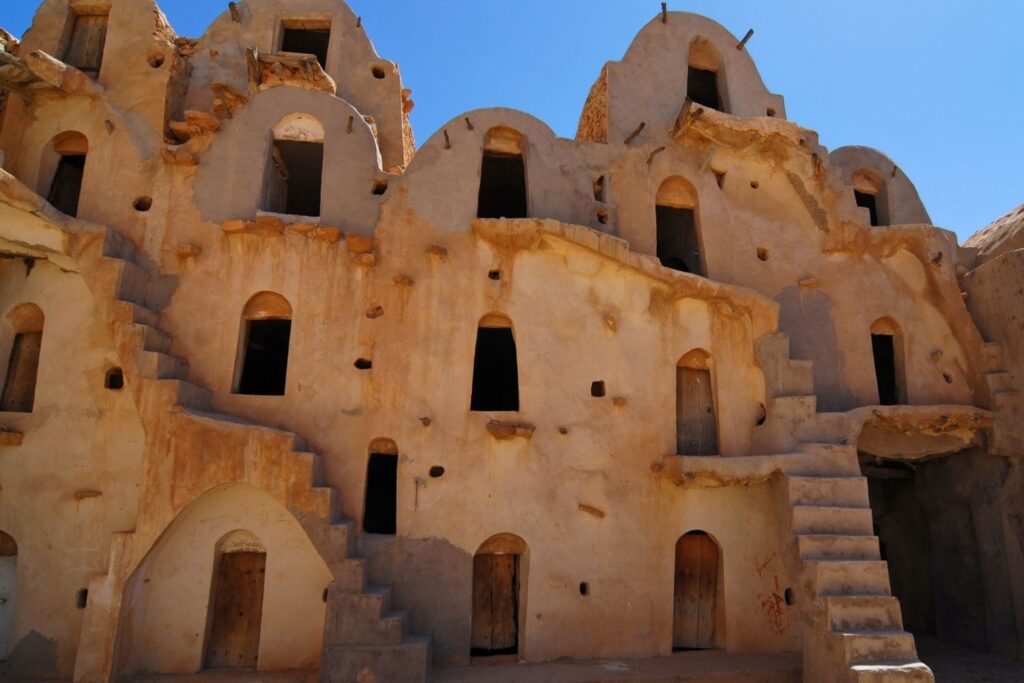
Traditional Tunisian Architecture
Overview and Characteristics
Traditional Tunisian architecture typically revolves around the concept of the medina, or old city, which serves as a communal living space organized around narrow, winding streets and interconnected dwellings. Houses are often built with thick walls made of locally sourced materials like stone, clay bricks, and limestone, providing insulation against the Mediterranean climate’s extremes of heat and cold.
One hallmark of Tunisian architecture is the use of central courtyards, which serve as private spaces for families and are often adorned with ornate fountains, mosaic tilework, and lush greenery. The layout of these courtyards fosters natural ventilation and light, while also providing a serene retreat from the bustling streets outside.
Key Examples: Traditional Houses, Bazaars
Traditional Houses (Dar)
Traditional Tunisian houses, known as dar, are typically two or three stories high, with flat roofs that sometimes feature rooftop terraces offering views of the cityscape. The ground floor usually houses storage areas and service rooms, while the upper floors contain living quarters for the family. Rooms are arranged around the central courtyard, creating a sense of openness and connectivity within the household.
Examples of Traditional Hous es:
- Dar Othman: Located in the Medina of Tunis, Dar Othman is a well-preserved example of traditional Tunisian architecture. It features intricately carved wooden doors, tiled floors, and geometric patterns in stucco decorations, reflecting the craftsmanship of local artisans.
- Dar Ben Abdallah Museum: Converted from a 17th-century mansion in Tunis, this museum showcases the architectural splendor of a traditional dar, including its courtyard, reception rooms, and exhibits on Tunisian art and culture.
Bazaars (Souks)
The bazaar, or souk, is a hallmark of Tunisian urban life and architecture, comprising a labyrinthine network of covered markets where vendors sell everything from spices and textiles to handicrafts and jewelry. These bustling marketplaces are integral to Tunisian social and economic life, serving as hubs of trade, craftsmanship, and cultural exchange.
Examples of Bazaars:
- Souk El Attarine: Located in the Medina of Tunis, Souk El Attarine is renowned for its vibrant atmosphere and traditional handicrafts, including ceramics, leather goods, and textiles. The narrow alleys are lined with stalls and shops, offering visitors a sensory experience of sights, sounds, and aromas unique to Tunisian culture.
- Souk of Nabeul: Located in the coastal town of Nabeul, this souk specializes in pottery and ceramics, showcasing the region’s artistic traditions and craftsmanship. Visitors can browse through a wide variety of hand-painted ceramics, from plates and vases to decorative tiles and utensils.
Local Festivals and Events
Carthage International Festival
The Carthage International Festival stands as one of Tunisia’s premier cultural events, drawing artists, musicians, and performers from around the globe to the ancient amphitheater of Carthage. Founded in 1964, the festival has evolved into a prestigious platform for showcasing a diverse array of artistic disciplines, including music, theater, dance, and opera. Against the backdrop of the historic Roman ruins, audiences are treated to world-class performances that span genres and cultures, reflecting Tunisia’s commitment to cultural exchange and artistic excellence.
The festival typically takes place during the summer months, attracting both local enthusiasts and international visitors who gather to experience the magic of live performances in an iconic setting. Beyond entertainment, the Carthage International Festival serves as a catalyst for tourism and economic activity, contributing to Tunisia’s cultural diplomacy and global reputation as a hub of artistic creativity.
Festival of the Sahara
The Festival of the Sahara, held annually in the oasis town of Douz, embodies Tunisia’s deep connection to its desert heritage and Bedouin traditions. Known locally as “Mawsim Douz,” this cultural extravaganza celebrates the nomadic way of life through music, dance, camel races, and traditional crafts. The festival offers a glimpse into the rich cultural heritage of Tunisia’s desert communities, highlighting their resilience, hospitality, and resourcefulness in the harsh desert environment.
Practical Information for Travelers
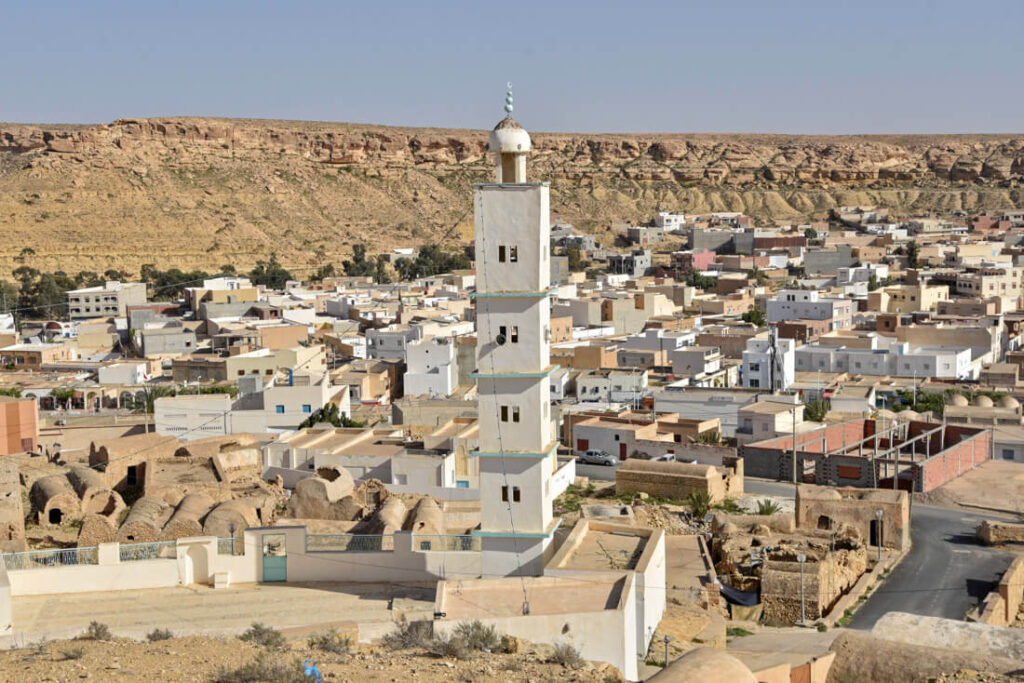
Travel Tips
Getting Around Tunisia
Tunisia offers various transportation options to explore its diverse landscapes and cultural sites.
- Public Transportation: Tunisian cities like Tunis and Sousse have reliable public transportation networks, including buses and light rail systems (metro), making it convenient to travel within urban areas. Buses also connect major cities and towns across the country, providing a cost-effective means of intercity travel.
- Taxis: Taxis are widely available in urban centers and can be hailed on the street or through taxi stands. They offer a flexible and relatively affordable way to navigate within cities and to nearby attractions. Make sure to negotiate fares before starting your journey, as taxis generally do not use meters.
- Car Rental: Renting a car is a popular option for travelers looking to explore Tunisia at their own pace, especially for reaching remote areas and archaeological sites. International and local car rental companies operate at major airports and in urban centers. Note that driving in Tunisia follows right-hand traffic rules, and it’s advisable to have an international driving permit and comprehensive insurance.
- Train Travel: Tunisia’s railway network connects major cities and towns, offering a comfortable and scenic way to travel between destinations. Trains are well-maintained and provide options for both economy and first-class travel.
Safety and Health Considerations
- General Safety: Tunisia is generally considered safe for tourists, but it’s always wise to exercise caution and be aware of your surroundings, especially in crowded areas and tourist sites. Petty theft can occur, so keep your belongings secure and be mindful of scams.
- Health Precautions: Make sure to have comprehensive travel insurance that covers medical expenses, including emergency evacuation if needed. Carry a basic medical kit with essentials such as medications, bandages, and insect repellent, especially if traveling to rural areas.
- Local Laws and Customs: Respect local customs and traditions, particularly when visiting religious sites or during religious festivals. Dress modestly in such places, covering shoulders and knees, and remove shoes before entering mosques.
- Emergency Contacts: Keep emergency numbers handy, including local police (197), ambulance (190), and fire (198). It’s also beneficial to have contact information for your country’s embassy or consulate in Tunisia for assistance in case of emergencies.
Conclusion
Historical Tours in Tunisia richness is a tapestry woven from centuries of diverse civilizations, each leaving an indelible mark on the country’s landscape and cultural identity. From the ancient ruins of Carthage to the vibrant medinas of Tunis and the majestic amphitheaters, Tunisia’s historical sites offer a window into the past, revealing the dynamic interactions of Mediterranean cultures and the resilience of its people.
Recap of Tunisia’s Historical Richness
Throughout this guide, we have explored Tunisia’s vast historical heritage, spanning the Carthaginian and Roman empires, the Islamic Golden Age, Ottoman rule, and French colonial influence. Each era has contributed unique architectural marvels, artistic achievements, and cultural traditions that continue to shape Tunisia’s identity today. Whether marveling at the mosaics of Dougga or experiencing the bustling souks of Sousse, Tunisia’s historical richness beckons visitors to uncover the layers of its storied past.
Importance of Preserving Historical Sites
Preserving Tunisia’s historical sites is crucial not only for maintaining cultural heritage but also for fostering national pride and identity. These sites serve as educational resources, offering insights into past civilizations and promoting cross-cultural understanding. By safeguarding archaeological treasures such as the Amphitheatre of El Jem and the Medina of Tunis, Tunisia ensures that future generations can appreciate and learn from the achievements of their ancestors. Moreover, tourism centered around historical sites supports local economies and promotes sustainable development.
FAQS
What are the must-see historical sites in Tunisia?
Tunisia boasts a wealth of must-see historical sites that showcase its diverse cultural heritage spanning millennia. Among the most iconic are the Ruins of Carthage, once the heart of an ancient Mediterranean empire; the Amphitheatre of El Jem, a UNESCO World Heritage Site renowned for its Roman grandeur; and the Medina of Tunis, a labyrinth of narrow streets and historic mosques dating back centuries. Other notable sites include the Dougga Archaeological Site, celebrated for its well-preserved Roman ruins, and the Great Mosque of Kairouan, a masterpiece of Islamic architecture. Each site offers a unique glimpse into Tunisia’s rich past and architectural splendor.
How can I get to the historical sites in Tunisia?
Getting to Tunisia’s historical sites is relatively straightforward due to the country’s well-developed transportation infrastructure. Major cities like Tunis, Sousse, and Carthage are connected by a network of highways and roads, making car travel a popular option for exploring remote archaeological sites. Alternatively, Tunisia’s railway system links key destinations, providing a comfortable and scenic journey between cities. For those preferring public transportation, buses and taxis are readily available, offering convenient access to historical sites within urban areas and nearby regions.
Is it safe to travel to Tunisia for historical tours?
Tunisia is generally considered safe for tourists, including those interested in historical tours. The country has taken significant measures to enhance security in recent years, particularly at popular tourist sites and urban centers. However, travelers are advised to exercise caution, stay informed about local developments, and follow any travel advisories issued by their home country. By taking common-sense precautions such as avoiding demonstrations, respecting local customs, and keeping valuables secure, visitors can enjoy a rewarding and safe experience exploring Tunisia’s rich historical heritage.
What should I pack for a historical tour in Tunisia?
Packing for a historical tour in Tunisia should consider the country’s Mediterranean climate and the nature of visiting archaeological sites. Essentials include lightweight and breathable clothing suitable for warm weather, comfortable walking shoes for exploring ruins and medinas, and a hat and sunscreen for sun protection. Additionally, packing a reusable water bottle to stay hydrated, insect repellent for outdoor excursions, and a small backpack for carrying essentials during day trips is recommended. It’s also advisable to carry a modest outfit for visiting religious sites and a camera to capture the architectural marvels and scenic landscapes.
Are there guided tours available at historical sites in Tunisia?
Guided tours are readily available at many historical sites in Tunisia, offering visitors insights into the cultural significance and historical context of each location. Professional guides, often multilingual, provide informative commentary and lead structured tours that highlight key features and hidden gems of each site. Guided tours can be booked through tour operators, hotels, or directly at the visitor centers of major archaeological sites such as Carthage, Dougga, and El Jem. These tours enhance the visitor experience by providing a deeper understanding of Tunisia’s history and architectural legacy, making them a popular choice for travelers seeking immersive cultural experiences.






